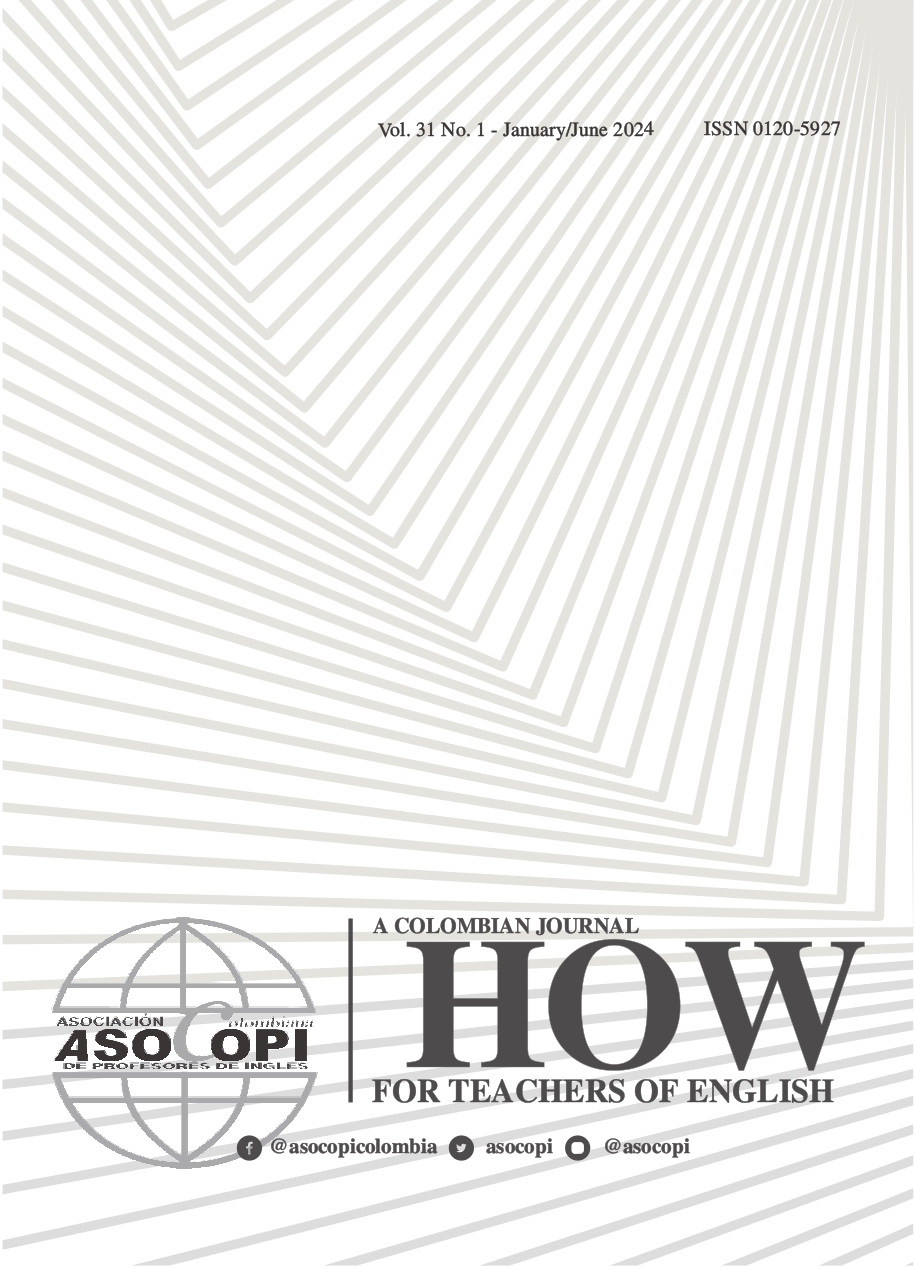The Contribution of Board Games to Pre-Kindergarten Students’ Oral Production
Main Article Content
Abstract
During the last decades, global interest in learning English as a foreign language has increased, encouraging countries to include it in school education. This trend was followed by the Chilean Ministry of Education, which suggests teaching English based on a communicative approach starting in early childhood education. To foster students’ learning, it is imperative to acknowledge that children learn differently than older learners and that English as a foreign language teachers should be able to identify their needs and implement age-appropriate strategies. This article reports the action research findings that explore the contribution of board games, memory, and bingo on pre-kindergarten students’ oral expression when participating in English lessons. A group of 19 children aged four from a private school in Concepción, Chile, took part in this study by playing online and board bingo, and memory games. Data were gathered by qualitative methods, such as an observation checklist, a semi-structured interview applied to the co-teacher, and group interviews carried out with students at the end of the intervention. The group and semi-structured interview data were analyzed through the thematic data analysis technique, along with frequency data analysis used to process the observational checklists. The results show that students increased their English oral production when games were implemented in their lessons.
Article Details

This work is licensed under a Creative Commons Attribution-NonCommercial-NoDerivatives 4.0 International License.

This work is licensed under a Creative Commons Attribution-NonCommercial-NoDerivatives 4.0 International License.
The authors of the manuscripts accepted for publication in HOW journal are required to sign a nonexclusive license agreement allowing ASOCOPI to reproduce the full text on the Internet or in any other available source. Authors retain copyright of their manuscripts with the following restrictions: first publication is granted to ASOCOPI; nonexclusive agreements with third parties can be established as long as the original publication in the HOW journal is properly acknowledged.
References
Ameer, S. (2016). Using games as a tool in teaching vocabulary to young learners. English Language Teaching, 9(7), 120-128. https://doi.org/10.5539/elt.v9n7p120
Barahona, M. (2016). English language teacher education in Chile: A cultural historical activity theory perspective (1st ed.). Routledge.
Burns, A. (2010). Doing action research in English Language Teaching: A Guide for Practitioners (1st ed.). Routledge Taylor & Francis Group.
Clarke, P. (2009). Supporting children learning English as a second language in the early years (birth to six years). Victorian Curriculum and Assessment Authority, 1-31.
Degirmency, N., & Yavuz, F. (2015). Teaching English to very young learners. Procedia-social and Behavioural Sciences, 197, 19-22. http://doi.org/10.1016/j.sbspro.2015.07.042
Derakashan, A., & Davoodi, E. (2015). The effects of using games on English vocabulary learning. Journal of Applied Linguistics and Language Research, 2(3), 39-47. http://www.jallr.com/index.php/JALLR/article/view/40/pdf_38
Emery, H., & Al-Marzouki, M. (2018). Using language learning task in the young learners’ classroom: An Omani perspective. In F. Copland & S. Garton (Eds.), Young learner education (pp.77-83). TESOL Press.
Hu, R. (2016). The age factor in second language learning. Theory and Practice in Language Studies, 6(11). 2164-2168. https://dx.doi.org/10.17507/tpls.0611.13
Inostroza, M. (2018). Using language practice games to teach English in Chilean primary classrooms. In F. Copland & S. Gartorn (Eds.), TESOL voices: Insider accounts of classroom life. Young learner education (pp. 85 – 92). TESOL Press.
Kallio, H., Pietila, A., Johnson, M., & Kangasniemi, M. (2016). Systematic methodological review: developing a framework for a qualitative semi-structured interview guide. JAN Leading Global Nursing Research, 72(12), 2954-2965. https://doi.org/10.1111/jan.13031
Lewis, A. (1992). Group child interviews as a research tool. British Educational Research Journal 18(4), 413-42.
Ministerio de Educación Chile (2018). Bases curriculares educación parvularia. MINEDUC.
Ministerio de Educación, Chile. (2020). Idioma extranjero inglés: Propuesta curricular. Kinder. MINEDUC. https://www.curriculumnacional.cl/614/articles-175765_programa.pdf
Mourão, S. (2015). English in pre-primary: The challenges of getting it right. In J. Bland (Ed.), Teaching English to young learners, critical issues in language teaching with 3-12-year-olds (pp. 51-70). Bloomsbury Academic.
Mourão, S. (2018). Playing in English: The emerging voices of preprimary children in a foreign language context. In F. Copland & S. Gartorn (Eds.), TESOL voices: Insider accounts of classroom life. Young learner education (pp. 67-76). TESOL Press.
Mourão, S., & Ellis, G. (2020). Teaching English to pre-primary children: Educating very young children (1st ed.). Delta Publishing.
Oliver, R., & Azkarai, A. (2017). Review of child second language acquisition (SLA): Examining theories and research. Annual Review of Applied Linguistics, 37, 63-76.
Pinter, A. (2011). Children learning second language (1st ed.). Palmagrave MACMILLAN.
Pinter, A. (2017). Teaching young language learners: Oxford handbooks for language teachers (2nd ed.). Oxford University Press.
Pinter, A. (2019). Agency and technology-mediated task repetition with young learners: Research and implications for primary classroom practice. Language Teaching for Young Learners, 1(2), 139-160.
Pokrivčáková, S. (2020). Introducing English to very young learners I. Tomas Bata University Press. https://doi.org/10.7441/978-80-7454-962-5
Puchta, H., & Elliott, K. (2017). Activities for very young learners (1st ed.). Cambridge University Press.
Rokita, J (2007). Lexical development in early L2 acquisition. Pedagogical University Press.
Shintani, N. (2012). Repeating input-based tasks with young beginner learners. RELC Journal, 43(1), 39-51. https://doi.org/10.1177/0033688212439322
Tabalí, P. (2020). Learning English as a foreign language: eliciting young Chilean children’s views [Doctoral dissertation]. The University of Warwick. http://webcat.warwick.ac.uk/record=b3494957~S15
Toghyani, A., & Khanehgir, M. (2017). Teaching new vocabulary to young learners: Using two methods Total Physical Response and Keyword Method. International Journal of Evaluations and Research in Education, 6(2), 150-156.
UNICEF (2018). Aprendizaje a través del juego. The lego foundation. UNICEF, NY.
Washington-Nortey, P., Zhang, F., Xu, Y., Brown, A., Chen, C., & Spence, C. (2020). The impact of peer interactions on language development among preschool English language learners: A systematic review. Early Childhood Educational Journal, 50, 49-59. https://doi.org/10.1007/s10643-020-01126-5





